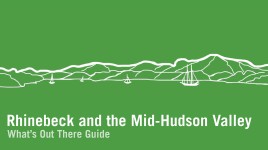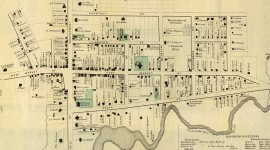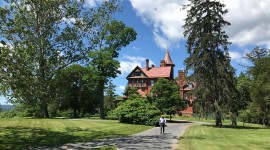Landscape Information
This 6.5-acre, rocky island located approximately 1000 feet from the Hudson River’s eastern shore, was acquired in 1901 by munitions merchant Francis Bannerman VI to store weapons and ammunition. From 1901 to 1918 Bannerman designed and erected a complex of buildings in the Baronial style of his ancestral Scotland, including an arsenal and residence. In 1905 he purchased offshore underwater rights to the east and south of the island, establishing a rectangular harbor and breakwater. Developed as promenade-like causeways, the harbor walls and breakwater supported several towers, including a pair spanned by an arched bridge.
Sited on a centrally-located sheltered rise, the residence is accessed by curvilinear footpaths, edged by oaks and cedars, and flowering shrubs, such as lilac and forsythia. A terrace abuts the southern façade of the home, affording expansive borrowed views of the river and Hudson Highlands. Planting beds, established by Bannerman’s wife, Helen, border the terrace and continue down the steep, rocky slope east of the residence.
In 1920 an explosion damaged the arsenal, and by the 1950s the Bannerman family had vacated the island. In 1967 the island was donated to the Taconic Park Commission and two years later was ravaged by a fire, leaving only the external walls of the residence and arsenal intact. The Bannerman Castle Trust, was formed in 1994 and in 1998 they engaged Doell and Doell, Garden Historians and Landscape Preservation Planners, to prepare a Historic Landscape Assessment of the site. More recently, the arsenal and residence were stabilized, paths rehabilitated, and a visitor center established, incorporating the first floor of the residence. Since 2007 the Trust has engaged gardeners to establish richly planted decorative beds near the residence and terrace.
While the island is part of the Hudson Highlands State Park Preserve, public access is managed by the Trust. Referred to collectively as the Bannerman Island Arsenal, the structures were listed in the National Register of Historic Places as a contributing feature of the Hudson Highlands Multiple Resource Area in 1982.
















